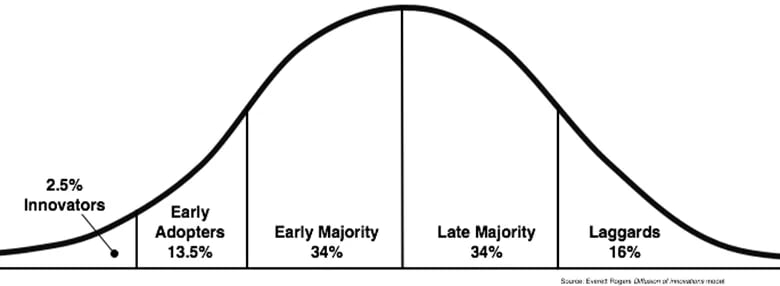How to Influence Improvement in Your Team
Hello again and thanks for joining me for another monthly musing. This time I’m sharing my thoughts on how you can influence improvement in your team and I hope it can help a few people.
People spend most of the time thinking about themselves
Dale Carnegie’s critically acclaimed book “How to Win Friends and Influence People” was arguably made famous the fact that we spend up to 95% of our thinking time…. thinking about ourselves. Therefore when you’re trying to influence your team to improve processes and focus on the customer you have to consider this.
It doesn’t matter how good your vision, mission and core values are (although they do have a part to play) because most of the time people don’t really care that much, including me. While this might sound like I’m being a little dismissive, try and look at it like this:
Your company vision is usually created by one person, or a small group of people at the very top. It’s their vision, not your team’s and no amount of inclusivity will change this. As people, we just want to know that we have a purpose and that we’re going to benefit, so don’t spend the majority of your time with slogans and reinforcing core values. As a leader or coach, spend most of your time encouraging and helping people fix the things that frustrate them. More often than not you’ll find out that it’s waste frustrating them, so if we help them fix it, they win, the customer wins and the company wins… happy days!

Improvement is not for everyone
Remembering my early days as a Manager brings back fond memories. I was lucky enough to work with some really good people but oh, the mistakes I made…
I’ve always tried to be a “Gemba Guy” and spend time with the people who do the value adding work. As I rushed into my first Management role (with no training or clue what I was going to do), I spent countless hours asking the team what would improve their job. After several months of improvement and some good results I started to notice that some people just weren’t bothered. They just complained, blamed other people and wanted a pay rise… constantly. To help the situation I spent even more time with them trying to understand their point of view to see if I could turn them around, but it made it worse. The more I gave, the more they craved and all it did was frustrate the people who wanted to get on.
The best advice I can give is don’t spend too much time with those who won’t improve. We respect that everyone has a story but Kaizen is very rewarding hard work and it’s not for everyone. In the words of Art Byrne “Let the concrete heads go to your competitors”.
It was the work of Simon Sinek that really made it much easier for me to understand how to motivate and influence people using the Diffusion of Innovation Model.

It’s really simple if you think of it like this…
- Always ask for volunteers; those who are up for it will come forward (Innovators)
- Make sure they have a great experience and they will bring in the Early Adopters
- Those who were sat on the fence will now want some too (Early Majority)
- Which will pull through the majority of the cynics (Late Majority)
- Don’t bother with the rest. Most of the time they will join the journey or leave of their own accord
Lead as if you have no power
If I remember correctly, it was Gary Convis who was given a piece of advice by his Mentor Kan Higashi when he was promoted to VP of the NUMMI plant which was a joint venture by General Motors and Toyota. Mr. Higashi asked Gary to “lead the organisation as if he had no power”. This took me years to understand properly and I really see this as “leading with reason”. Instead of using your authority, physique or sheer will to brow beat people into submission, always use reason and lead by example. People will always do something that really makes sense to them. Also, be mindful of how you behave when facing pushback. It’s easy to try and influence people by using the 3F’s, which were made popular by Alan Deutschman in his critically acclaimed book “Change or Die”:
- Biased facts – “Look, this is the situation as I see it”
- Fear – “You know what might happen if you don’t do it”
- Force – “I’m telling you for the last time, now get on with it”
Try to avoid these situations wherever possible but remain mindful that change isn’t for everyone. Learn to know when you’re dealing with a Concrete Head.
Where there’s blame… there’s more blame! Silo’s breed the wrong behaviour
Everyone’s familiar with the term “no blame culture” but I’m not quite sure that’s the right way of looking at it. We have to accept that blaming people is going to happen. For example, just look at how the media operate. Their business model is literally built upon blame and we get it shoved at us 24 hours a day, 7 days a week. It’s no wonder people react the way they do when faced with a problem.
To make it even worse we then organise our company into silo’s. We need to remember that behaviour follows structure, which is why the value stream approach works so well. When working in silo’s it’s all about doing the work in batches, then throwing it over the fence so it’s the next departments problem. But when you have value stream teams, they are a team made up with people from all relevant departments. This leads to people focussing on flow and lead time, which requires people to work together.
However, this still won’t stop people from looking for blame. The best thing a leader can do when faced with this behaviour is understand that it is normal and reinforce the fact that you want your team to “fix the problem, not the blame”. Be prepared to reinforce this every single day.
You will always influence those who trust you
To be honest you won’t have to do much influencing if people trust you. Providing they know the reasons and how they will benefit, the most you’ll have to do in an environment of trust is create the opportunity for your team to improve; but how do we build trust?
Firstly, steer well clear of any applied psychology or pseudo-science. I fully appreciate that having an understanding of human behaviour is a requirement for leaders and techniques such as NLP may have its advantages, but real trust isn’t built upon manipulation. You may get away with it once but as soon as one person realises, or even thinks you’re playing them, it will spread like wildfire and no one will really trust you again unless you recognise your failings and address them in public.
Real trust isn’t built when things are going well, it’s earned when things are going wrong.
If you always go to Gemba, roll up your sleeves and get in the trenches with people when it’s needed, they will learn to trust you. This will make it much easier when you ask for your team to improve themselves and their processes.
In summary, influencing your team to get involved in improvement is a must and the rewards are always worth it. Remember to remain authentic, organise into value stream teams, help your people fix the things that bug them and constantly promote that we should “fix the problem, not the blame” and in no time you’ll be making great progress.
Until next time,
Leon
Share this
You May Also Like
These Related Stories

Understanding the Need for Continuous Improvement

What is the Apprenticeship Levy?


No Comments Yet
Let us know what you think